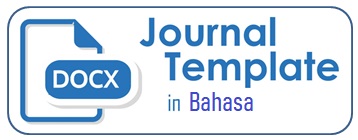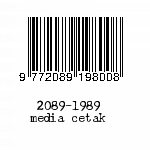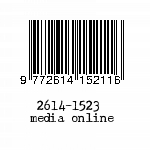What Motivates Tourists to Share Information on Social Media
Abstract
This research aims to examine the phenomenon of information sharing that occurs in groups in social media by uisng formal and informal communication that affect Transactive Memory System (TMS). This research also examines how TMS’s role on sharing information in groups as well as in self-relevant values. This research imply that formal and informal communications positively affect TMS, so it has a positive effect on self-relevant value. Therefore, transactive memory systems became a good mediator between formal and informal communication with self-relevant value. By sharing information in the group, their image will increase in front of people outside the group (self-image congruity). The group is created for the purpose to re-share the information with the other group who successfully invite potential tourists will increase self-relevant value in other groups.
References
Abel, J. I., Buff, C. L., & O’Neill, J. C. (2013). Actual self-concept versus ideal self-concept: An examination of image congruence and consumers in the health club industry. Sport, Business and Management: An International Journal, 3(1), 78-96. https://doi.org/10.1108/20426781311316915.
Albers, S. (2010). 10 reasons why people post food pictures on facebook. Psychology Today. www.psychologytoday.com.
Choi, S. Y., Lee, H., & Yoo, Y. (2010). The impact of information technology and transactive memory systems on knowledge sharing, application, and team performance: A field study. MIS Q, 34(4), 855-870. https://doi.org/10.2307/25750708.
Choi, Y. K., Seo, Y., & Yoon, S. (2017). EWOM messaging on social media: Social ties, temporal distance, and message concreteness. Internet Research, 27(3), 495-505. https://doi.org/10.1108/IntR-07-2016-0198.
Chung, N., & Koo, C. (2015). The use of social media in travel information search. Telematics and Informatics, 32(2), 215-229. https://doi.org/10.1016/j.tele.2014.08.005.
Chung, N., Lee, S., & Han, H. (2015). Understanding communication types on travel information sharing in social media: A transactive memory systems perspective. Telematics and Informatics, 32(4), 564-575. https://doi.org/10.1016/j.tele.2015.02.002.
Dittrich, Y., & Giuffrida, R. (2011). Exploring The role of instant messaging in a global software development project. 2011 Sixth IEEE International Conference on Global Software Engineering, 103-112. http://dx.doi.org/10.1109/ICGSE.2011.21.
Gursoy, D., & McCleary, K. W. (2004). An integrative model of tourists’ information search behavior. Annals of Tourism Research, 31(2), 353-373. https://doi.org/10.1016/j.annals.2003.12.004.
Hair, J. F., Black, W. C., Babin, B. J., & Anderson, R. E. (2010). Multivariate data analysis. Pearson Education.
Huang, Y., Basu, C., & Hsu, M. K. (2010). Exploring motivations of travel knowledge sharing on social network sites: An empirical investigation of US college students. Journal Hospitality Marketing Management, 19(7), 717-734. https://doi.org/10.1080/19368623.2010.508002.
Jackson, P. (2011). Requirements for an information system to support transactive memory. VINE, 41(4), 401-427. https://doi.org/10.1108/03055721111188511.
Kim, D. H., Jang, S. C., & Adler, H. (2015). What drives café customers to spread eWOM? Examining self-relevant value, quality value, and opinion leadership. International Journal of Contemporary Hospitality Management, 27(2), 261-282. https://doi.org/10.1108/IJCHM-06-2013-0269.
Kim, D. Y., Lehto, X. Y., & Morrison, A. M. (2007). Gender differences in online travel information search: Implications for marketing communication on the internet. Tourism Management, 28(2), 423-433. https://doi.org/10.1016/j.tourman.2006.04.001.
Kim, T. H., & Bensabat, L. (2012). Effectiveness of knowledge seeking behaviors embedded in social networks: A perspective of individuals in workplaces. In: Proceedings of The 45th Annual Hawaii International Conference on Systems Science, 3848-3857. https://doi.org/10.1109/HICSS.2012.232.
Kwon, K., & Cho, D. (2016). How transactive memory systems relate to organizational innovation: The mediating role of developmental leadership. Journal of Knowledge Management, 20(5), 1025-1044. https://doi.org/10.1108/JKM-10-2015-0413.
Li, Y. H., & Huang, J. W. (2013). Exploitative and exploratory learning in transactive memory systems and project performance. Information & Management, 50(6), 304-313. https://doi.org/10.1016/j.im.2013.05.003.
Qu, H., & Lee, H. (2010). Travelers’ social identification and membership behaviors in online travel community. Tourism Management, 32(6), 1262-1270. https://doi.org/10.1016/j.tourman.2010.12.002.
Rhee, J., & Johnson, K. P. (2012). Investigating relationships between adolescents’ liking for an apparel brand and brand self congruency. Young Consumers, 13(1), 74-85. https://doi.org/10.1108/17473611211203957.
Xiang, Z., & Gretzel, U. (2010). Role of social media in online travel information search. Tourism Management, 31(2), 179-188. https://doi.org/10.1016/j.tourman.2009.02.016.
Zhong, X., Huang, Q., Davison, R. M., Yang, X., & Chen, H. (2012). Empowering teams through social network ties. International Journal of Information Management, 32(3), 209-220. https://doi.org/10.1016/j.ijinfomgt.2011.11.001.
Copyright (c) 2023 Virginia Mandasari, Nurkholish Majid

This work is licensed under a Creative Commons Attribution-ShareAlike 4.0 International License.


















